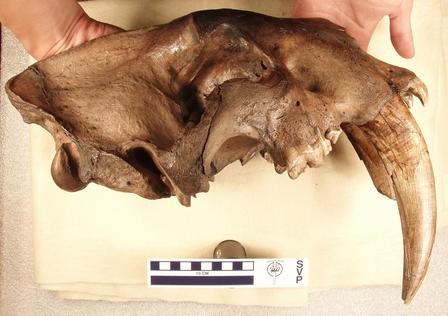A new study reveals that ancient saber toothed cats not only possess a deadly set of terrifying teeth, they apparently grow them faster than modern day cats.
The saber toothed cat used to roam North and South America some 700,000 years to 11,000 years ago which is also called the Smilodon fatalis. They could rip apart large prey that includes bison and camels with their long canine teeth measuring as long as several inches which grows rather long in a short amount of time.
Scientists have examined and analyzed the fossilized remains of the saber toothed skulls found in the La Brea Tar Pits in Los Angeles where they have determined that the giant felines' permanent canine teeth apparently grew one fourth inches every month which is twice as fast as African lions of today.
Paleontologists reveal that the strategy of the Smilodon is quite deadly when it comes to capturing prey as it bites into the animal's neck and ripping its arteries apart for a quick and easy kill.
Saber toothed cats are almost the same size as the modern day lion or tiger however they possess heavier builds where they leap on their prey and latch on with their powerful paws and legs.
According to co-author of the study and paleontologist Z. Jack Tseng from the American Museum of Natural History, New York, they are basically like lions on steroids with knives coming out of their jaws.
Researchers also reveal that these "knives" are also baby saber teeth as these will be shed after one to one and a half years of age where the permanent ones will become fully grown by three and a half years of age.
According to lead author of the study Aleksander Wysocki from Clemson University, this fast growth rate of adult canine teeth also allowed young saber toothed cats to become fully effective and expert hunters at a very young age.
This study is published in the journal, PLOS One.



























